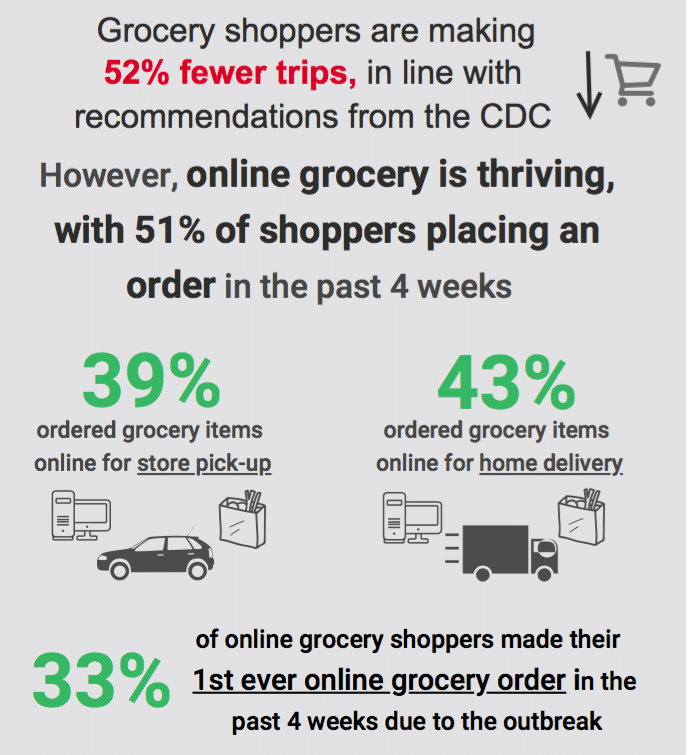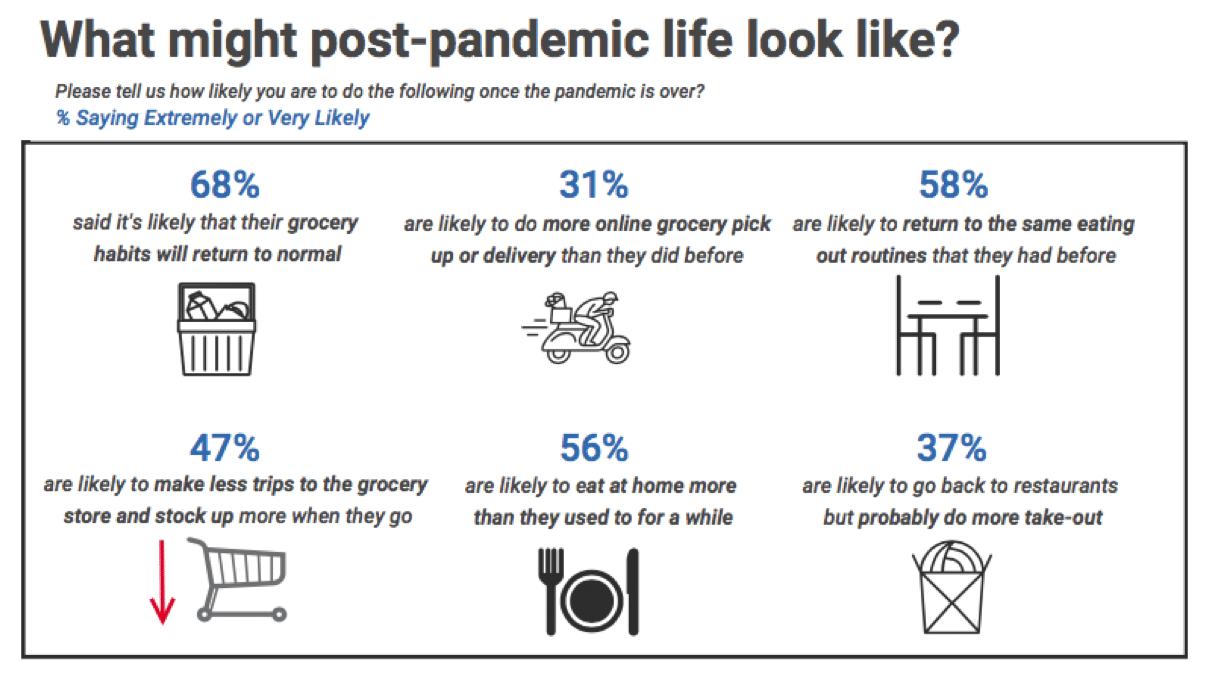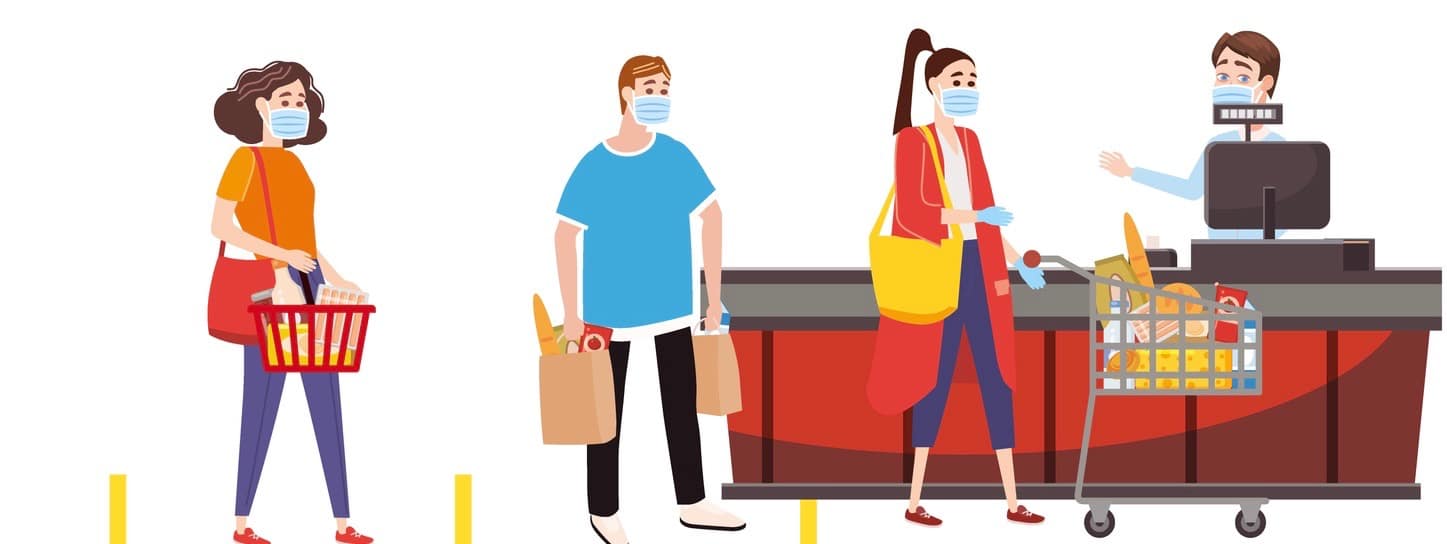New research from consumer packaged goods-focused sales and marketing agency Acosta offers new insights into how consumer shopping habits are continuing to shift due to COVID-19. The report, which found shopper concern over the pandemic is escalating, especially among older households and those in hardest-hit areas, also provides guidance to help retailers best serve consumers.
“While we’re still seeing new trends form week-to-week, like the prioritization of comfort foods over pantry and paper products, we’re also seeing trends solidify with e-commerce continuing to surge and in-store trips continuing to decline due to growing concern,” said Darian Pickett, CEO of Acosta, in a news release. “Our research shows that shopper concern continues to increase as weeks go by. In our first shopper survey (from March 6-12), concern levels averaged 6.9, and now it’s risen to 8.2 out of 10. That said, we’re optimistic these concerns will reverse with more than half of shoppers surveyed noting they expect their shopping habits to return to ‘normal’ once the pandemic is over.”
Acosta’s third COVID-19 research report, gathered via online surveys conducted between April 3-7, provides insight into both current and future consumer behavior, as well as recommendations for retailers.

Changing habits and preferences
In line with recommendations from the Centers for Disease Control, shoppers are making 52 percent fewer store trips. Online grocery ordering is continuing to surge with 51 percent of shoppers placing an order in the past four weeks ending 4/7. Of online grocery shoppers, 33 percent made their first-ever online grocery order in that period, up 5 percent from the previous report.

Shopper priorities are beginning to shift with comfort foods edging out pantry and paper products for the first time. Shoppers reported sweets, frozen pizza and salty snacks topped their shopping list for the upcoming week. To support local economies, shoppers also planned to buy meals from area restaurants in the upcoming week via drive-thru (38 percent), carry-out (36 percent) and delivery (24 percent).

Rules of engagement for retailers
- Focus on people first, namely shoppers and staff, and ensure enhanced safety by enabling no-touch transactions, like self-checkout and Apple Pay.
- Recognize changing shopper attitudes and behaviors and adapt quickly by offering assorted comfort foods and snacks in addition to essentials.
- Ensure the retail digital shelf and e-commerce strategies are prepared for the accelerated shift to online grocery demand.
- With staying at home likely remaining strong in the months post-COVID, provide convenient shopper “solutions” centered on meals and self-care.
- Accommodate lower-income shoppers who are getting relief to buy food via stimulus checks; they may be looking to trade down and leverage promotions.
Acosta’s research was gathered via online surveys using the company’s proprietary shopper community between April 3 and 7, 2020. The report also includes comparison data from online surveys conducted between March 6 and 12 and March 20 and 29, 2020.








